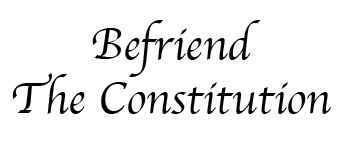What are the branches of the federal government and what do they do?
The Constitution creates a government with three branches. They are called the legislative, executive, and judicial branches. Together they form a complete government. Each branch has different responsibilities and powers. The responsibilities and powers given to each branch are defined by the Constitution.
The legislative branch is known as the Congress of the United States. It consists of the Senate and the House of Representatives. Congress is given the power to make the laws of the United States. The Constitution defines the types of laws Congress can and cannot make.
The executive branch consists of the President of the United States, the Vice President, and those who work in the various departments of the national government. The President is in charge of the executive branch. He manages the daily operations of the government, commands the military, works with foreign governments, appoints ambassadors and judges, and enforces the laws made by Congress.
The judicial branch is the Supreme Court and all other courts of the national government. The federal courts settle disputes about the Constitution and the laws passed by Congress. They interpret and apply the Constitution and the laws.
The three branches operate independently. One branch cannot prevent another from going about its daily work. However, each branch is given the ability to prevent the other branches from exceeding their proper power. This ability is a responsibility that helps insure that one branch of government does not become too powerful. The government is designed so that the three branches work together but keep each other under control.
Published October 25, 2016



